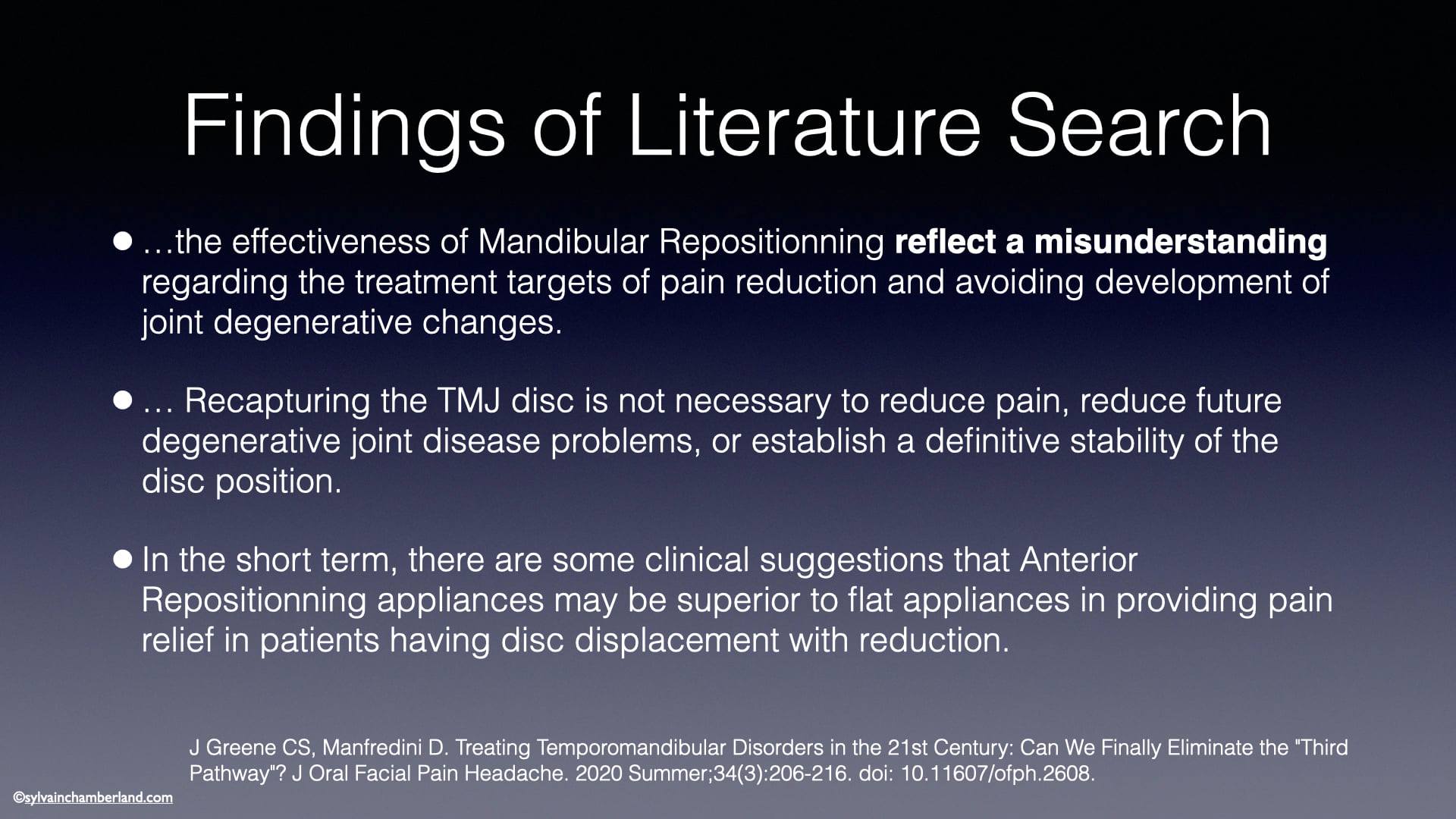Third Pathway
I recently had a consultation with a 25-year-old man who arrived with 4 boxes, each containing an occlusal plate.
This is case #1.
To summarize his story, it all started when he was 18. According to the description he gave me, he had dislocated a disc (probably non-reducible). He consulted a self-proclaimed expert in TMJ disorders, who gave him an initial soft plate, quickly followed by a rigid plate with an anterior articulated plane and posterior teeth clearance. He wore this plate for almost 2 years. The lack of posterior contact caused the teeth to erupt. After a while, it was as if he became a prisoner of this plate, because if he didn’t wear it, he would only close on the last teeth and have what we call an anterior gap. He also had “selective grinding” to reduce this prematurity. Composite veneers were added to the lingual of the upper canines in an attempt to re-establish a canine disclusion.
The self-proclaimed expert made him a 2nd plate with posterior support only, which he wore for a year. The patient told me that he had suffered like a martyr with this plate.
Discouraged, he asked for a 2nd opinion from a specialist in oral medicine. The specialist made him a new plate, this time with equal and balanced contacts throughout. The patient’s comfort was finally restored.
He comes to me because, without the plate, some of his teeth don’t touch.
This is an eloquent case of what is now referred to in the literature as the “3rd way”.
I’ve summarized the article on this subject.
Case #2 is similar in that the occlusal plate with anterior support was made to prevent tooth wear. Prolonged use of this plate caused significant changes in dentomaxillary and intermaxillary relationships.
The solution for these 2 patients will be to “wean” them off the plate, in order to remove any iatrogenic effect of the occlusal changes.














Ask a question or leave a comment (0)